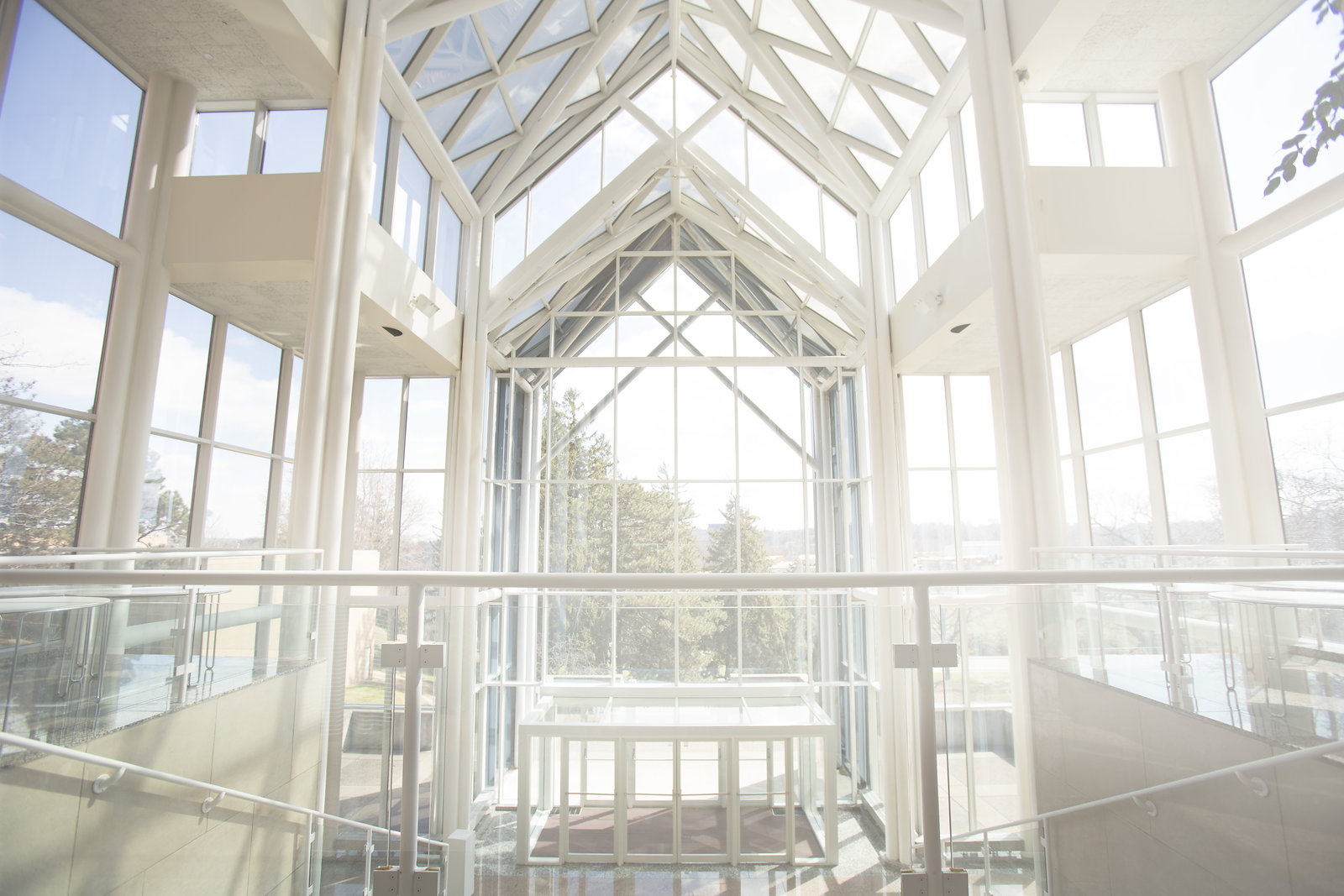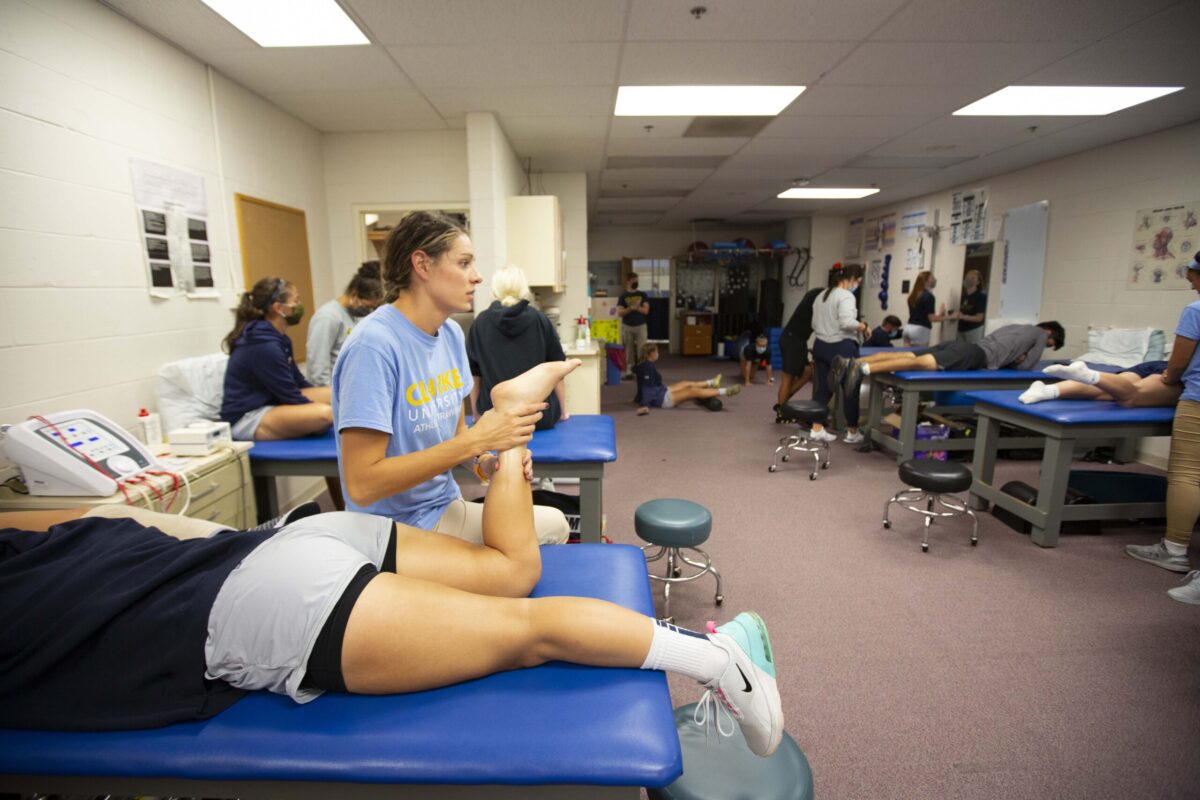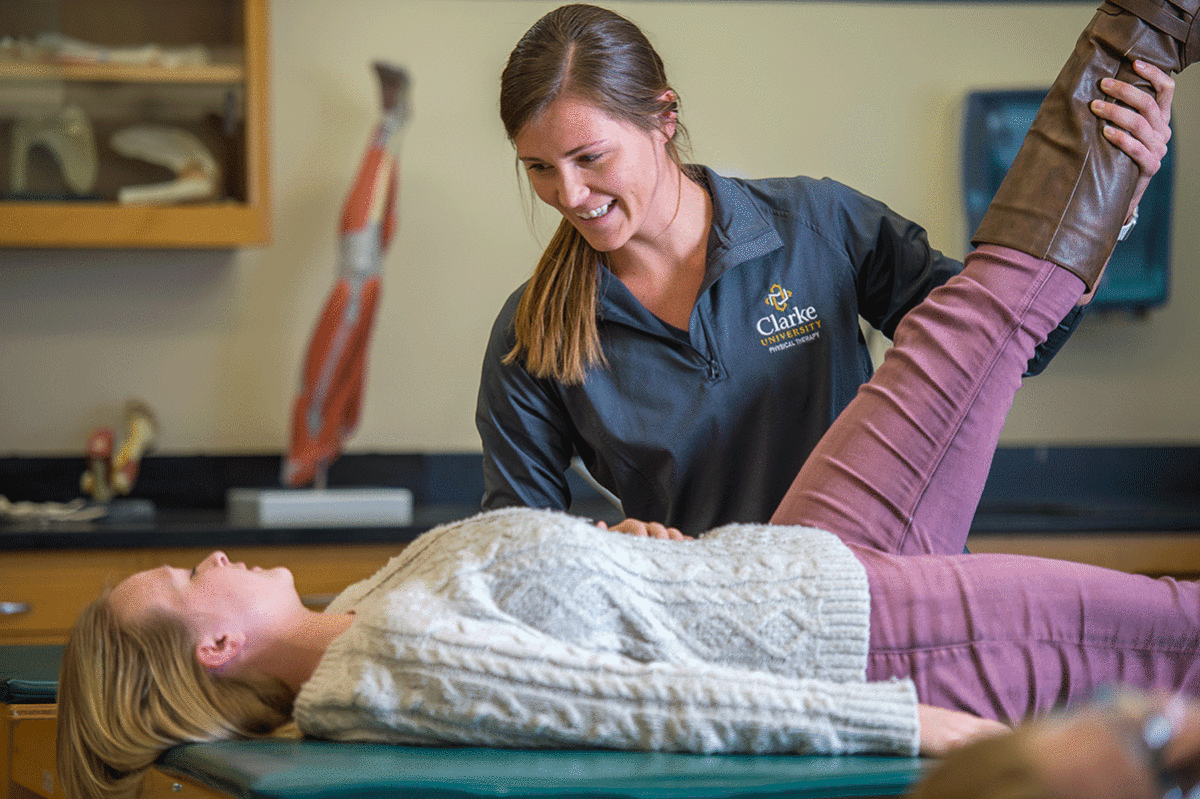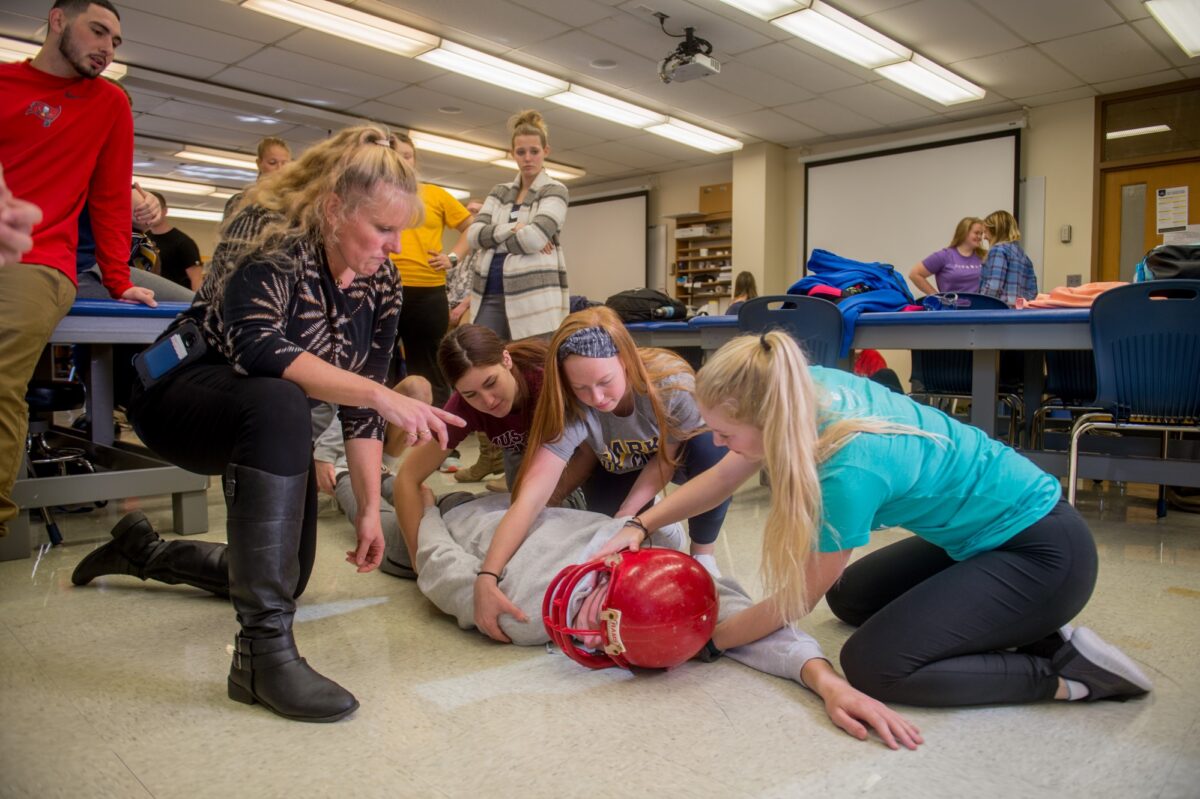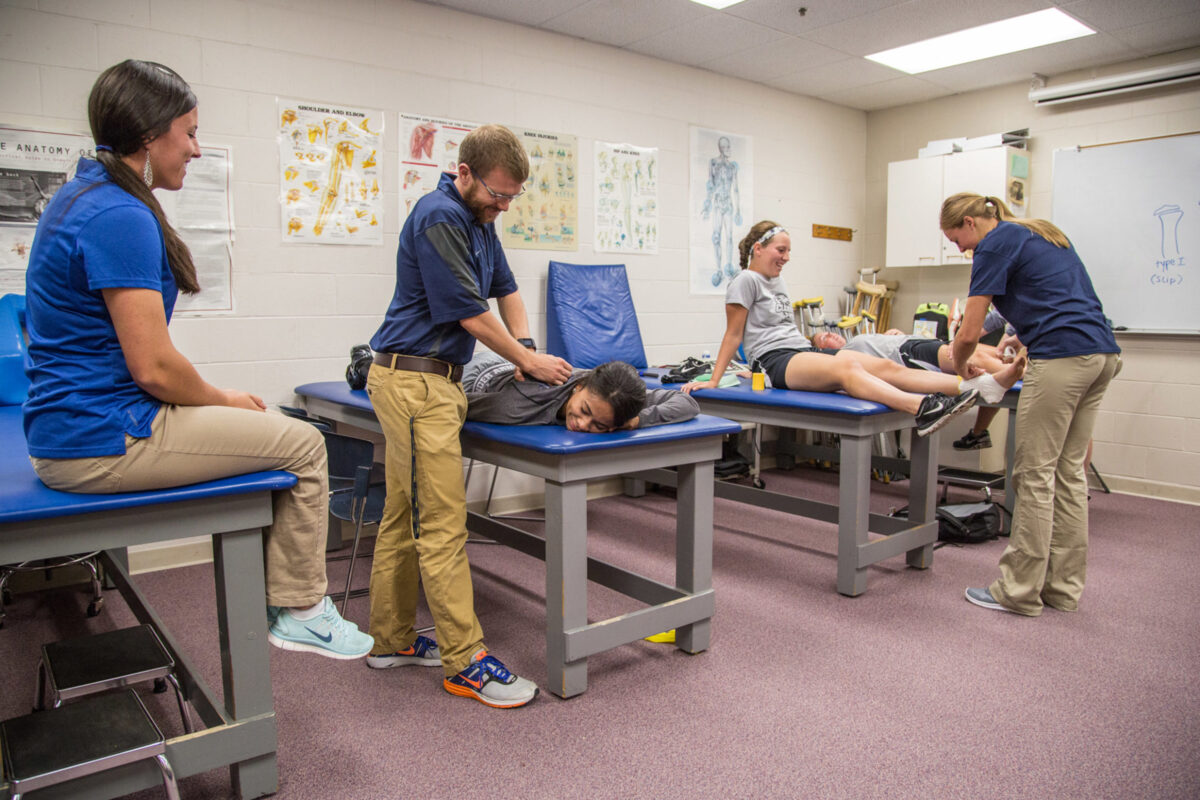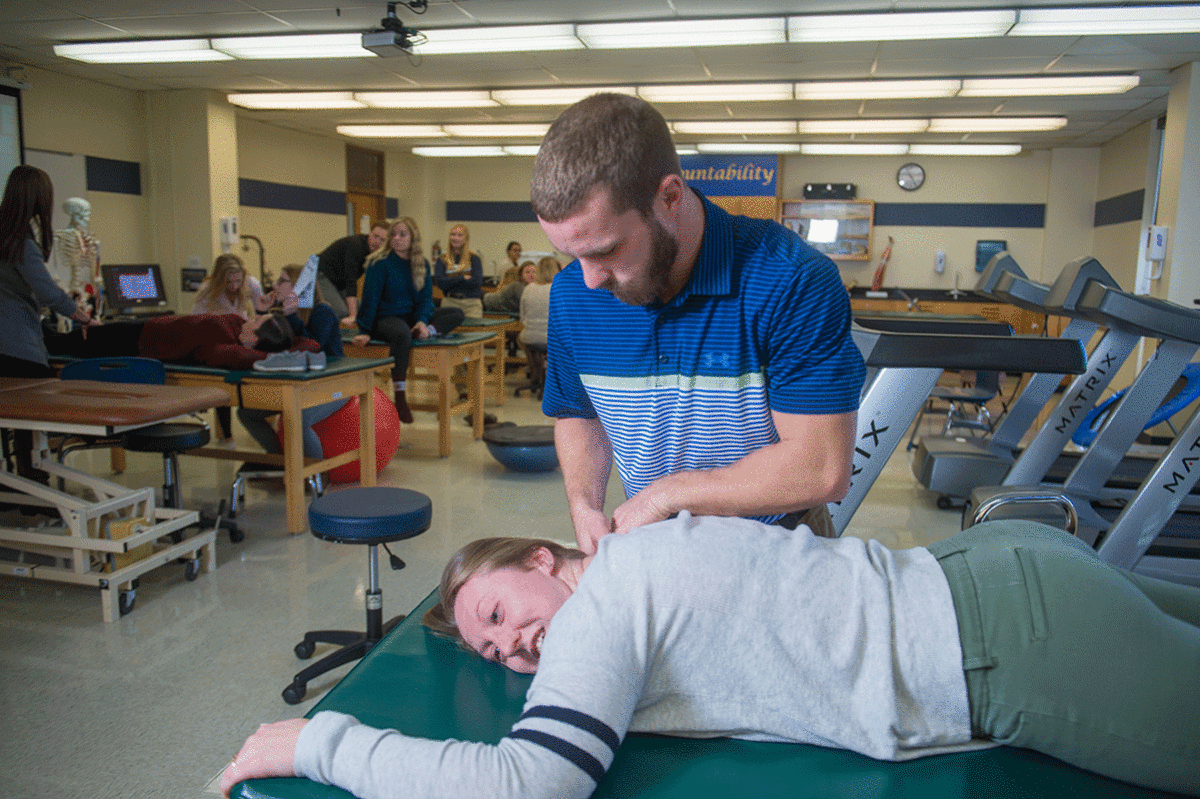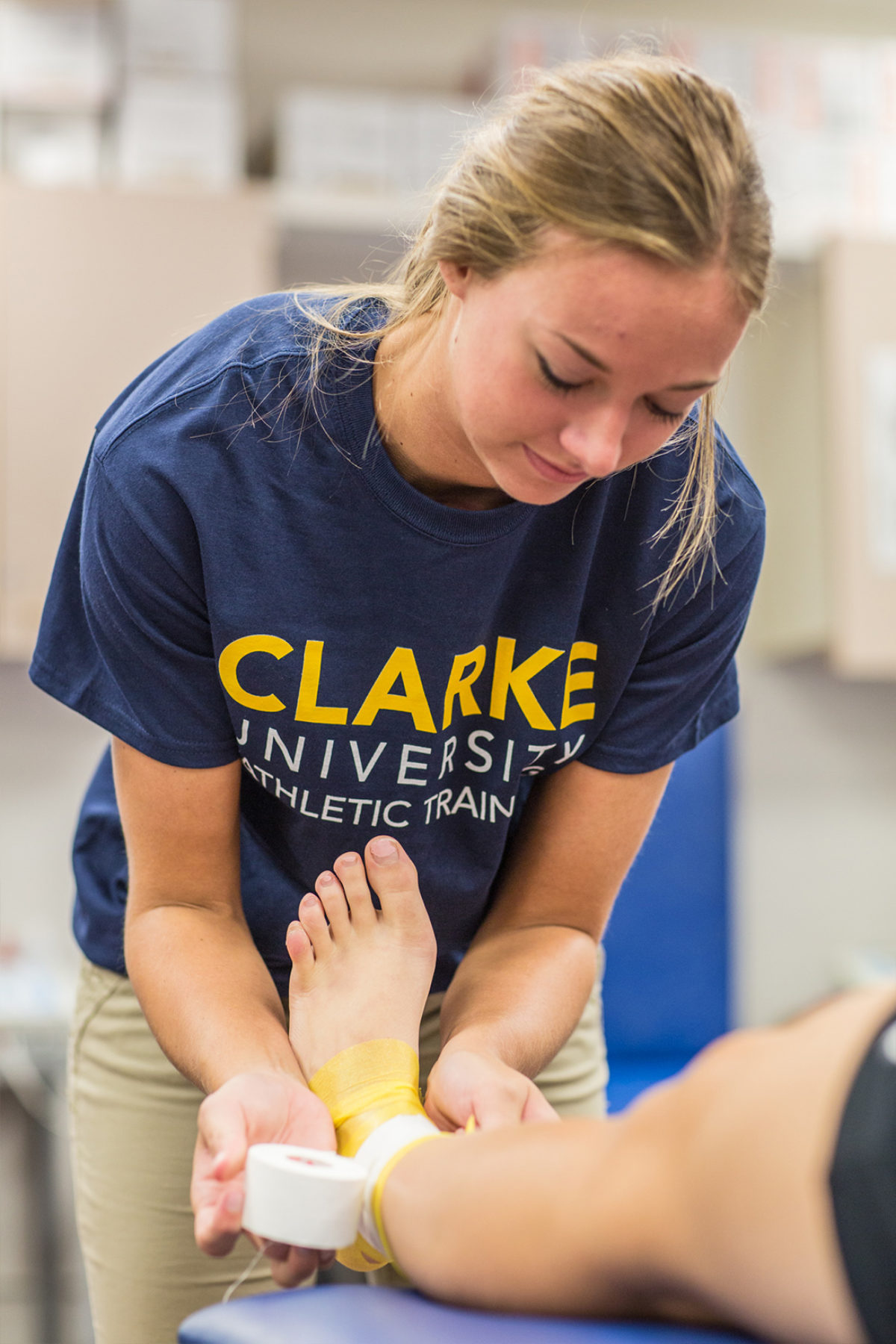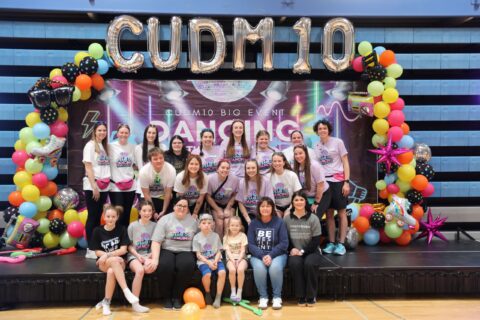Dee Higgins, Ph.D.
Every patient and every student is inherently good, is worth time, effort and care, and deserves your best efforts.
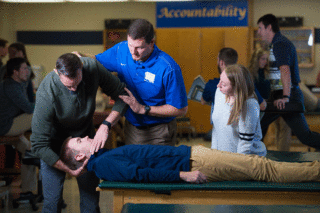
Clarke offers students the opportunity to prepare for entrance into professional programs in the area of health science like Athletic Training while completing their undergraduate degree. Many health science programs require a baccalaureate degree as a pre-requisite for entrance into the professional program. Although the application for admission into professional programs must be sought independently by the student, Clarke pre-professional health science advisers will act as advisers to students who wish to fulfill pre-requisites for admission into specific programs. These advisers will also assist students in seeking admission to graduate programs.
Clarke’s Pre-Athletic Training courses offer a solid foundation in the sciences including anatomy with a cadaver lab, chemistry, psychology, ethics, and research. This coursework will prepare you for graduate school applications and work in the field of Athletic Training.
Application for admission into professional programs must be sought independently by the student. The pre-professional health science advisers will assist students in seeking admission to the following programs as well as acting as an adviser to the students who wish to fulfill pre-requisites for admission into specific programs. Students planning to enter any of the following programs are encouraged to consult with advisers regularly.
Applicants are considered on an individual basis. Apply to Clarke today to begin your journey.
Athletic Training degree students work on each other with feux injuries to practice proper techniques.
Athletic training students are given hands-on experience in each class.
Clarke University students have done experiences abroad in addition to their degree. Abroad experience destinations have included Spain, Scotland, Ireland, and Japan.
Clarke has a variety of student organizations such as Clarke Inclusive Games and Dance Marathon that put your professional skills into practice while helping your community.
